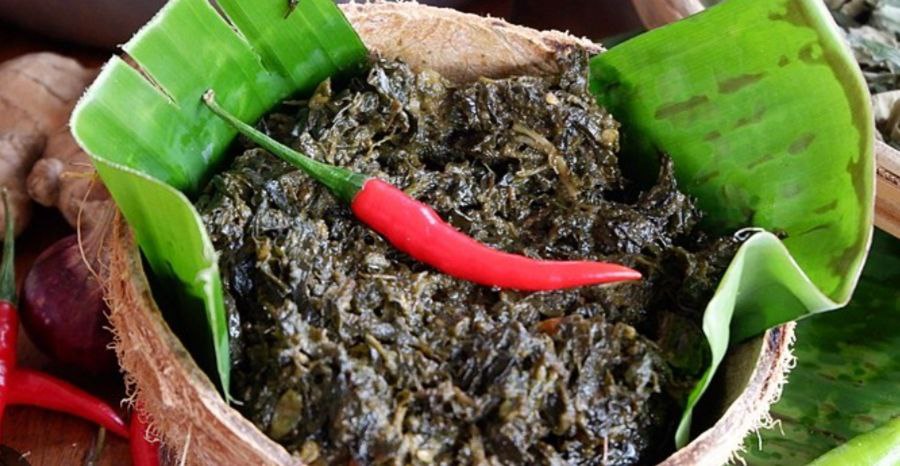Just the mention of ‘laing’ makes one salivate. That’s how gastronomically appealing laing is, a famous specialty food from Bicol. This spicy, creamy delicacy is one of the comfort foods our balikbayan look for whenever they vacation in the Philippines.
Made from dried taro leaves, laing is cooked in chopped onion, garlic, ginger, shrimp paste, with pork, or dried fish or shrimp. Simmered in coconut milk with chili, it is left to dry until oil comes out of the coconut milk. It is believed that laing should not be stirred while being cooked to prevent it from being itchy when eating. Others say laing leaves should be thoroughly washed and dried before cooking.
Paired with grilled liempo or pork belly or fish, one cannot resist the temptation of laing. You can be sure to have a second or third helping of steamed rice. Reason it is a popular staple dish people order from restaurants.
Including taro leaves as part of your diet has many health benefits as they are low in calories, high in fiber, and high in micronutrients. This may help in promoting a healthy body weight, boosting heart health, and preventing disease. But still, one should go easy from eating laing as it contains fat from coconut milk.
By the way, laing means “long” or “tall,” maybe in reference to how long or tall the taro plant is.
































